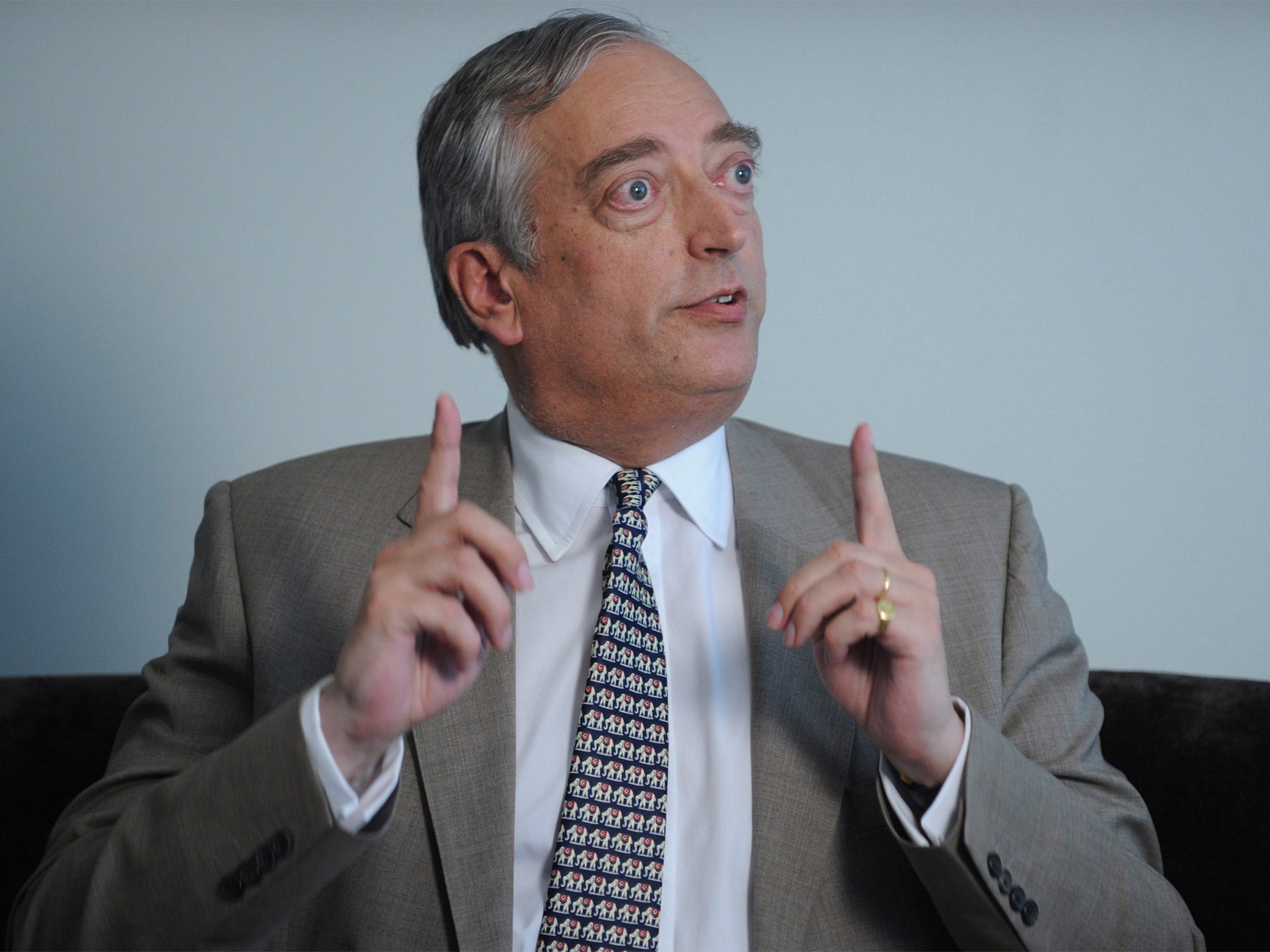Climate-change sceptic Viscount Monckton of Brenchley claims tombstone artwork critical of his position is a ‘death threat’
Lord Monckton is one of several names featured under the line ‘Lest We Forget Those Who Denied’ on the artwork at Angela Ruskin University

Your support helps us to tell the story
From reproductive rights to climate change to Big Tech, The Independent is on the ground when the story is developing. Whether it's investigating the financials of Elon Musk's pro-Trump PAC or producing our latest documentary, 'The A Word', which shines a light on the American women fighting for reproductive rights, we know how important it is to parse out the facts from the messaging.
At such a critical moment in US history, we need reporters on the ground. Your donation allows us to keep sending journalists to speak to both sides of the story.
The Independent is trusted by Americans across the entire political spectrum. And unlike many other quality news outlets, we choose not to lock Americans out of our reporting and analysis with paywalls. We believe quality journalism should be available to everyone, paid for by those who can afford it.
Your support makes all the difference.The prominent climate change sceptic Viscount Monckton of Brenchley has complained to police after a tombstone engraved with his name was exhibited at Anglia Ruskin University.
Lord Monckton claims that the artwork – which features his name alongside those of other prominent sceptics such as Lord Lawson, the former Environment Secretary Owen Paterson and journalist James Delingpole – amounts to a death threat.
The piece comprises a tombstone with the names of six sceptics chiselled under the words “Lest We Forget Those Who Denied”. A constant stream of engine oil runs over the memorial.

The exhibit won this year’s Anglia Ruskin Sustainability Art Prize for “bringing together a powerful message with a beautiful piece of art”, according to a university press release.
Viscount Monckton was far from impressed, saying the prize had been awarded by a “jumped-up polytechnic”.
He outlined his thoughts on the right-wing American website WorldNetDaily after visiting the exhibition “to gather evidence for the courts”.
“To put one’s name on a tombstone while one is still alive is to make a death threat, the nastiest and most repellent form of hate speech. The implication was that, if we were not already dead, the ‘artist’ and the ‘university’ that promoted his ‘work’ would very soon see to it that we were,” he wrote.
He went on to draw comparisons with the Third Reich.
“A death threat is a death threat. It is no laughing matter… It is plain that the long, relentless campaign of intimidation by the Nazis of their opponents, with name-calling and death threats very similar to that perpetrated by the ‘university’, was an essential part of the process,” he wrote.
Lord Monckton also took issue with the vice-chancellor of the university for painting him as a climate change “denier”.
“It mattered not to the vice-chancellor, nor to the “artist”, that I do not deny the existence of climate change… I do not even deny that man may have some as yet unquantified but probably insignificant and even net-beneficial influence on the climate,” he said.
A spokesman for the viscount said that a complaint had been made to police about the university press release, which he says reinforced the representation of the death threat in the art work.
The work is by third year BA fine art student Ian Wolter, who lives in Saffron Walden. He told The Independent that the viscount’s reaction was “nonsense”.
“I don’t think any reasonable person would think of my plywood sculpture as a death threat,” he said, adding: “His extreme reaction is a great example of the power of political art.”
A spokesman for the university declined to comment.
Join our commenting forum
Join thought-provoking conversations, follow other Independent readers and see their replies
Comments